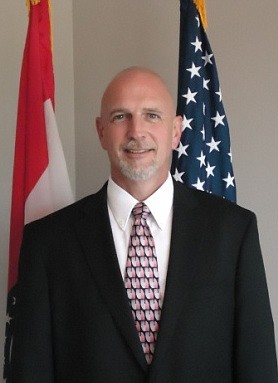Between the COVID-19 pandemic, runaway inflation and continued supply chain interruptions, job creators in Missouri have faced their fair share of headwinds during the past two years.
We've remained resilient, but for Missouri to bounce back strong, it's vital policymakers remain focused on supporting renewed growth through wise investments in our communities and our infrastructure. High on that priority list is closing the digital divide, which remains one of the most pressing issues facing rural communities, with an estimated 422,000 Missourians and many businesses without access to high-speed broadband.
There is simply no way for communities with inadequate internet service to build a favorable economic climate for business, manufacturing and industry. Too often, companies are forced to take their operations elsewhere, small business owners struggle to find a competitive edge, and Missouri manufacturers lose out on a chance to compete in the global economy.
Fortunately, steps are being taken by Gov. Mike Parson and leaders in the legislature to capitalize on a historic influx of federal funding to help close the gap in unserved communities. Through the Rural Digital Opportunity Fund, the American Rescue Plan Act, the National Telecommunications and Information Administration, the bipartisan Infrastructure Investment and Jobs Act, and other sources, Missouri will be able to tap into hundreds of millions of dollars to implement projects that expand access and build out the state's broadband infrastructure. It is vital we do not let this opportunity go to waste.
Unfortunately, we know from experience federal programs alone aren't enough. Supply chain issues and labor shortages can easily delay construction, and we must lay the right groundwork and target resources wisely to build this critical infrastructure quickly and efficiently.
That starts with the backbone of Missouri's rural communications infrastructure -- the massive network of utility poles that zigzag across our state and deliver wired internet connections. In Missouri's rural communities, it's common to find more than a dozen utility poles are needed to reach a single home or business. When these aging, wooden poles cannot accommodate new broadband attachments, they must be upgraded or replaced. This work can quickly eat up a disproportionate share of the funds needed to complete a deployment project, and can even delay a project indefinitely.
Ultimately, it's the unserved families and business owners who end up paying the price. In fact, a recent report suggests every month of delayed broadband expansion costs Missouri anywhere from $18.72 million-$47.59 million.
That's why several states are doing everything in their power to get their citizens connected as soon as possible.
They are utilizing federal funding to support upgrades to rural utility poles so broadband expansion can proceed quickly. Texas allocated $75 million to create a pole replacement fund as part of its statewide, $500 million broadband strategy last year. North Carolina did the same, allocating $100 million to address the state's aging utility pole infrastructure. Missouri should, too.
According to BroadbandNow, Missouri ranks far below Texas and North Carolina, coming in 32nd among states nationwide in broadband access. If we want to make up ground, then establishing a pole replacement fund is a common-sense solution. Will we let the digital divide continue to keep Missourians and our businesses from accessing economic opportunity? Or will we ensure that new broadband funding translates into reliable, high-speed connectivity by upgrading our utility poles? For Missouri business, it's a clear choice.
Ray McCarty is the president and CEO of the Associated Industries of Missouri.

